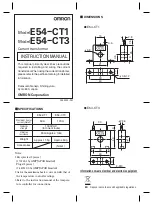
2.2 BATTERIES
The transceiver is powered by three rechargeable or dispos-
able LR1 type batteries. To select the required battery type,
place the switch located in the battery compartment (Fig.5) to
the required position using a small pointed device. To enter
the battery compartment and view the battery/programming
switch, unscrew the battery compartment retaining screw and
remove any batteries.
Note: When placing batteries always ensure correct polarity.
CAUTION: Never place transceivers with non-
rechargeable batteries in a storage rack with its switch
(located in the battery compartment) placed in the
position for rechargeable batteries.
CAUTION: Do Not interfere with the programming
switch as the transceiver’s programming data may be
lost.
2.3 SWITCHING ON AND OFF
In normal operation and when programmed for ‘new system
mode’ the transceiver will endeavour to contact (handshake)
the paging central (i.e alpha desk) before it switches on or off.
Transceivers with an alphanumeric display will show the mes-
sage ‘Waiting for Central’. If no response is given from the
alpha desk within a period of approximately 20 seconds the
transceiver (with and without an alphanumeric display) will
begin to bleep until the reset button is pressed or by placing
the transceiver back into the storage rack. During this period
transceivers with an alpha display will show the message
‘Central not responding’.
Once the reset button has been pressed the transceiver will
revert to its previous status. This function can be overruled by
pressing the ‘Scroll-up’ button followed by the ‘Scroll-down’
button followed by the back-light button.
When the transceiver has been programmed for ‘Old system
mode’, the function of switching on and off is done without
endeavouring to contact the paging central (i.e no handshake
required).
Once the transceivers have been switched on, the transceivers
check if the opcode setting corresponds with the hardware
configuration. If not, (e.g when one of the PS alarms is enabled
and there is no PS module available or when location detection
is enabled and no location receiver module is available) a bleep
until reset signal is generated and the display will show:
“CONFIG ERROR”.
Note: In conditions of extreme electrostatic discharge (8kV),
the display of the transceiver may appear black. To remedy this
state, remove the transceiver’s batteries and then replace them
again, or place the transceiver in to its storage rack and then
remove it again.
INSTALLATION INSTRUCTION 83
DP 6000 DIGITAL PAGING SYSTEM
Page 5/29
February 1997.






































